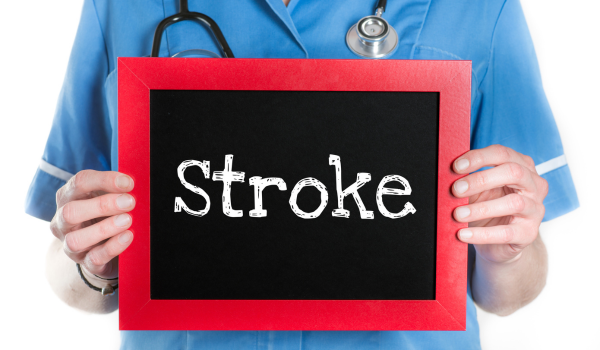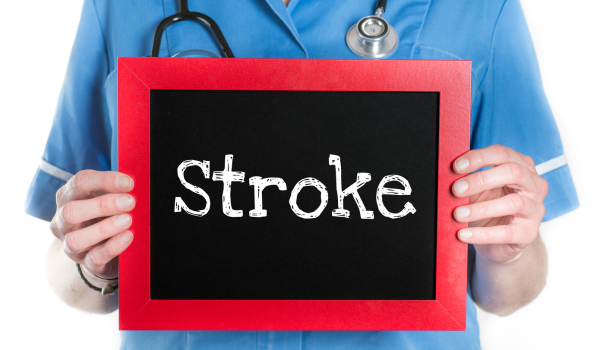.png)
A Transient Ischemic Attack (TIA), commonly referred to as a "mini-stroke," is a temporary disruption in blood flow to part of the brain. Though the symptoms of a TIA typically resolve within minutes to hours, it can be an early warning sign of a future, potentially more severe stroke. TIAs share similar symptoms to strokes but don’t cause permanent damage. This article will explore the role of a TIA as a predictor of a future stroke, how to identify a TIA, and the importance of early intervention in preventing a more serious stroke.
1. What is a Mini-Stroke (TIA)?
A Transient Ischemic Attack (TIA) occurs when blood flow to part of the brain is temporarily blocked or reduced, leading to stroke-like symptoms. Unlike a full stroke, the blockage in a TIA is brief, and the symptoms typically resolve without causing permanent damage. TIAs are often seen as "warning strokes" because they are often followed by a higher risk of a full-blown stroke.
-
Symptoms of a TIA: Symptoms of a TIA can be similar to those of a stroke and may include sudden numbness or weakness in the face, arm, or leg (usually on one side of the body), confusion, trouble speaking or understanding speech, dizziness, difficulty walking, and a sudden severe headache.
-
Duration of Symptoms: The symptoms usually last for a few minutes to several hours but typically resolve within 24 hours.
Although TIAs don’t cause permanent damage, they should not be ignored as they can signal an increased risk of a future stroke.
2. The Link Between TIAs and Future Strokes
Having a TIA significantly increases the risk of experiencing a full stroke in the future. According to studies, the risk of a stroke is highest within the first 48 hours following a TIA, making immediate intervention crucial. Several factors contribute to the elevated stroke risk after a TIA:
-
Underlying Health Conditions: Individuals who experience a TIA often have risk factors for stroke, including high blood pressure, diabetes, high cholesterol, and a history of cardiovascular disease.
-
Atherosclerosis: The buildup of plaque in the arteries (atherosclerosis) is often a factor in both TIAs and strokes. If plaque disrupts blood flow to the brain, it can result in a stroke or TIA.
-
Blood Clots: A clot that temporarily blocks blood flow to the brain can cause a TIA, and this clot may later break loose, causing a stroke.
Studies show that individuals who have had a TIA are at a 10-20% increased risk of having a stroke within the next 90 days. This makes TIAs a critical warning sign that should not be ignored.
3. The Importance of Early Intervention After a TIA
Because TIAs are a precursor to strokes, prompt medical intervention is essential. Early intervention can reduce the likelihood of a future stroke and improve long-term health outcomes. Here’s why early intervention is so crucial:
-
Medical Evaluation: After a TIA, doctors will typically conduct tests, including CT or MRI scans, to determine the cause of the episode and assess the risk of future strokes.
-
Identifying Risk Factors: Doctors will identify and manage any underlying health conditions that may have contributed to the TIA, such as high blood pressure, diabetes, or high cholesterol.
-
Medications: Blood-thinning medications, such as aspirin or anticoagulants, are often prescribed after a TIA to reduce the risk of blood clots and future strokes.
-
Lifestyle Changes: Doctors may recommend changes to diet, exercise, and lifestyle habits to reduce stroke risk, including stopping smoking, increasing physical activity, and eating a heart-healthy diet.
The sooner you receive treatment after a TIA, the better the chances of preventing a more serious stroke.
4. Diagnostic Tests and Assessing Stroke Risk After a TIA
After experiencing a TIA, a healthcare provider will typically perform a series of diagnostic tests to determine the cause of the symptoms and assess the risk of a future stroke. Some of the most common tests include:
-
CT or MRI Scans: These imaging techniques allow doctors to examine the brain and detect any abnormalities, including blocked arteries or signs of damage that may indicate a risk of future strokes.
-
Carotid Ultrasound: This test uses sound waves to create images of the carotid arteries in the neck, helping to identify any blockages that may lead to a stroke.
-
Echocardiogram: An echocardiogram may be used to evaluate the heart’s function and detect any potential sources of blood clots that could travel to the brain.
-
Blood Tests: Blood tests may be conducted to check for conditions such as high cholesterol, diabetes, or blood clotting disorders that could increase the risk of a stroke.
By thoroughly assessing the cause of a TIA and identifying any underlying conditions, doctors can develop an appropriate treatment plan to reduce the risk of a future stroke.
5. Long-Term Prevention After a TIA
After a TIA, long-term prevention strategies are essential to reduce the likelihood of a future stroke. These strategies may include:
-
Managing Chronic Conditions: Effectively managing conditions like hypertension, diabetes, and high cholesterol is crucial in stroke prevention. Regular monitoring and medication adherence are key to controlling these risk factors.
-
Healthy Diet and Exercise: Adopting a heart-healthy diet and engaging in regular physical activity can help control weight, reduce blood pressure, and improve overall cardiovascular health.
-
Quit Smoking: Smoking cessation is one of the most effective ways to reduce stroke risk. Smoking increases the likelihood of clot formation and damages the blood vessels, contributing to the risk of a stroke.
-
Regular Check-ups: Regular check-ups with a healthcare provider can help monitor stroke risk and detect any new symptoms or complications early.
By following these preventive measures and working closely with healthcare providers, individuals can significantly reduce the risk of stroke after a TIA.
6. When to Seek Emergency Medical Help
If you experience any symptoms of a TIA, it’s essential to seek emergency medical help immediately. Early medical intervention can significantly reduce the risk of a full stroke. The following symptoms warrant immediate medical attention:
-
Sudden numbness or weakness in the face, arm, or leg, especially on one side of the body
-
Difficulty speaking or understanding speech
-
Sudden trouble seeing in one or both eyes
-
Sudden confusion, dizziness, or loss of balance
-
Severe headache with no known cause
Even if the symptoms resolve on their own, it’s important to seek medical care to assess your risk and develop an appropriate treatment plan.
.png)
.png)
.png)
.png)
.png)
.png)
.png)
.png)
.png)
.png)
.png)
.png)
.png)
.png)








